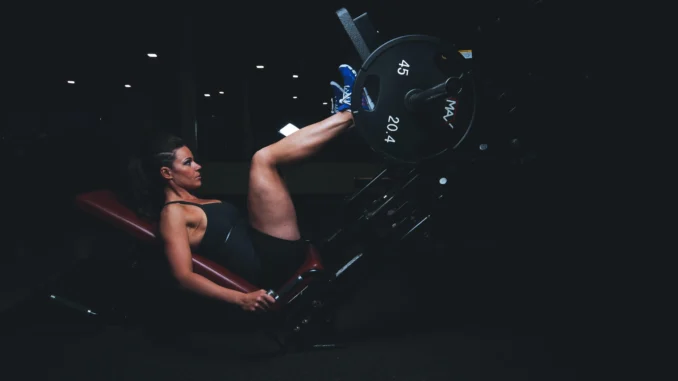
What does RIR mean… Don’t panic it may be a new term for you but various professional athletes and bodybuilders have been using them in their workouts to level up the intensity of their workout. The Full form of RIR is ‘Reps in reserve‘.
One of the common mistakes that people make that hurdles their progression in the gym and that’s not pushing themselves hard enough, not Ego-lift. Sometimes people tend to choose a weight that is somewhat challenging for them and in that they are able to perform the given number of repetitions. Using RIR should get rid of this mistake.
What does RIR mean?
RIR stands for ‘Reps In Reserve‘, It means the number of reps that could have been done before reaching failure for the particular set. RIR (Reps In Reserve) is used for repetition-based exercises like squats, barbell curls, etc. RIR is a great tool to measure the intensity of any particular set in your training.
- 4 RIR = 4 Reps In Reserve (4 reps away from achieving failure).
- 3 RIR = 3 Reps In Reserve (3 reps away from achieving failure).
and so on…
Here is an example that will help you get a better understanding of RIR, let us take an exercise as rack pulls, your goal would be to do 10 reps at 2 RIR. To do this make sure to take a weight that will allow you to do 12 reps and fail if you tried to do the 13th rep with the correct form. Then as you progress increase the weight load and take the weight that will allow you to do 11 reps meaning 10 repetitions with 1 RIR.
Reps In Reserve is an evolution of relative perceived effort (RPE). RPE was a concept that was developed by ‘Gunner Borg’. It was an excellent method to determine the exertion during the exercise. RPE was primarily used to monitor aerobic exercises or time-based exercises. RPE method was able to tell about the particular session so it had its limitation when people wanted to know about a particular set of exercises that’s when further extensive research and studies were done that would tell us about RPE evolution to RIR.
The original scale that’s is of RPE was based on heart rate 6 to 20 meaning ’60 to 200 BPM’ now that scale has been evolved to 1 to 10.
There is a downside to the RIR method, If you don’t know how strong you’re on given reps in a given exercise it can be hard to estimate Reps left in reserve. That’s why if you want to add the RIR method to your workout, you should be in tune with your body and become familiar with how much you can push yourself during the last few reps of the set because it’s important. You won’t learn to implement RIR correctly in a day the more you practice and train with this method the better you become.
Why you should use RIR?
When you train close to failure it helps in strength development and helps in achieving muscle hypertrophy. Adding RIR to your workout will help you keep a check on the intensity meaning it will allow us to work hard and push ourselves, not too hard otherwise we will fail to achieve the volume required to complete the set. RIR can also be useful data that will help you measure your progressive overload.
RIR is also useful to keep our form in check because it works effectively when exercise is performed with the right form and technique one should not compromise with the form just to get in more reps. RIR method is designed for each individual training that can reach proximity to failure with aim of increasing weight or reps as he/she progresses thus decreasing Reps in reserve each week. RIR can help individuals track progress at their own rate while some advanced lifters may see slow progress in the same training cycle, new beginner lifters may see quick progress.
RIR can also help you train without external factors such as sleep, energy, stress, and general life affecting your workout. RIR helps you achieve the same intensity even if you’re on your top, for example, someday you’re benching 65kg for 10 reps and still having 2-3 Reps in reserve and after 2-3 days with less sleep and low energy, you’re lifting 55kg for 10 reps having 2-3 RIR. Yes, you’re not lifting as heavy but the intensity remained the same.
Every day you’ll be max lifting and it’s beneficial but remember your max lift can vary from day to day due to other factors being in play such as sleep, nutrients, and energy.
Why you shouldn’t work out till failure?
Various research and studies already have been conducted that showed that training till muscle failure won’t maximize your muscle in strength or hypertrophy. Technical failure may create a greater training stimulus but it will also create an unequal amount of fatigue. It will have a direct effect on your recovery thus affecting your ability to hit sufficient volume and intensity that is required to stimulate maximum muscle growth.
Some research has also shown that training till failure is not worth the risk. Every now and then doing a last set of exercises till failure will have some benefits it will also work as a benchmark for your progress.
Final Words
People often underestimate their strength and it has a direct effect when practicing RIR because the measure isn’t accurate thus affecting their workout. Beginner/new lifter has no way of finding out how hard they can work themselves. To level themselves up they can use other methods to increase their strength and know their limits such as dropsets, supersets, or giant sets.
Whenever training to failure makes sure to have a spotter with you or a safety tool in spots, It’s to be better safe than sorry.